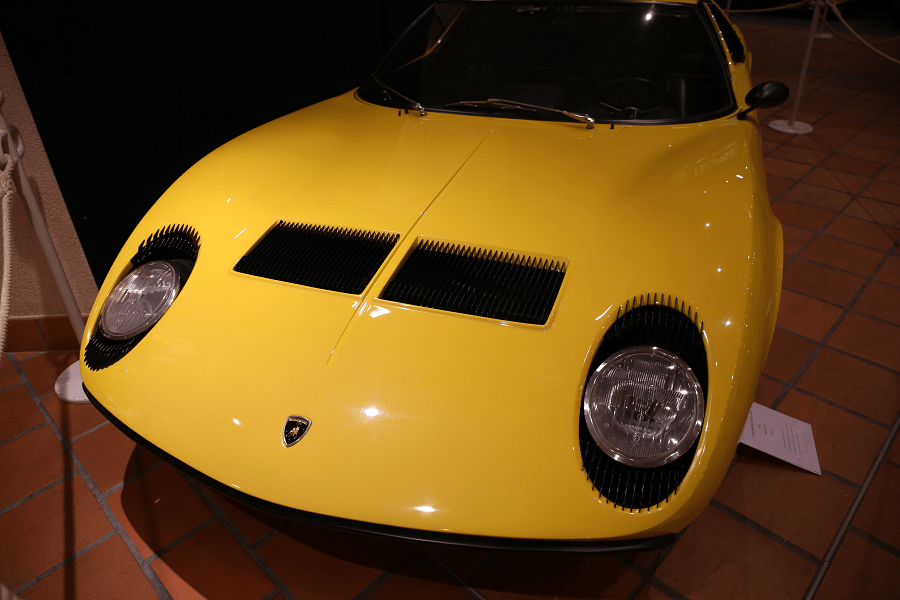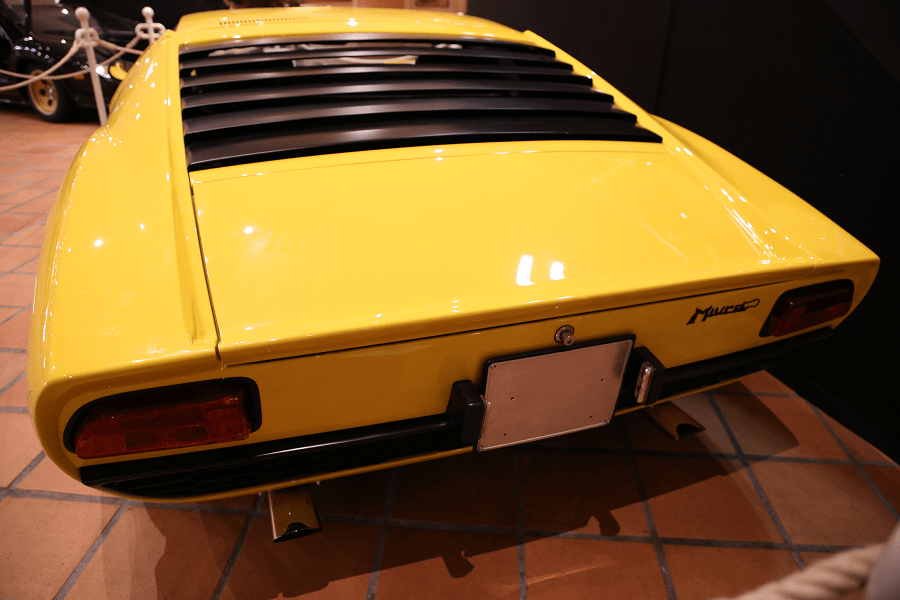Yellow Lamborghini Miura P400 from 1967. V12, 350 HP
The Lamborghini Miura is a sports car produced by Italian automaker Lamborghini between 1966 and 1973. The car was the first supercar with a rear mid-engined two-seat layout, although the concept was first seen in a production road car with René Bonnet’s Matra Djet, introduced in 1964. This layout has since become the standard for high-performance sports and supercars. When released, it was the fastest production road car.
The Miura was originally conceived by Lamborghini’s engineering team, which designed the car in its spare time against the wishes of company founder Ferruccio Lamborghini, who preferred powerful yet sedate grand touring cars over the race car-derived machines produced by local rival Ferrari.
The Miura’s rolling chassis was presented at the 1965 Turin Auto Show, and the prototype P400 debuted at the 1966 Geneva Motor Show. It received stellar receptions from showgoers and the motoring press alike, each impressed by Marcello Gandini’s sleek styling and the car’s revolutionary mid-engine design.
Lamborghini’s flagship, the Miura received periodic updates and remained in production until 1973. A year later the Countach entered the company’s lineup, amid tumultuous financial times for the company.
P400
The earliest model of the Miura was known as the P400 (for Posteriore 4 litri). It was powered by a version of the 3.9 L Lamborghini V12 engine used in the 400GT at the time. The engine was mounted transversely and produced 350 PS (257 kW; 345 hp). Exactly 275 P400s were produced between 1966 and 1969 – a success for Lamborghini despite its then-steep price of US$20,000 (equivalent to $167,036 in 2021).
Taking a cue from the Morris Mini, Lamborghini formed the engine and gearbox in one casting. Its shared lubrication continued until the last 96 SVs, when the case was split to allow the correct oils to be used for each element.
An unconfirmed claim holds the first 125 Miuras were built of 0.9 mm steel and are therefore lighter than later cars. All cars had steel frames and doors, with aluminium front and rear skinned body sections. When leaving the factory they were originally fitted with Pirelli Cinturato 205VR15 tyres (CN72).














